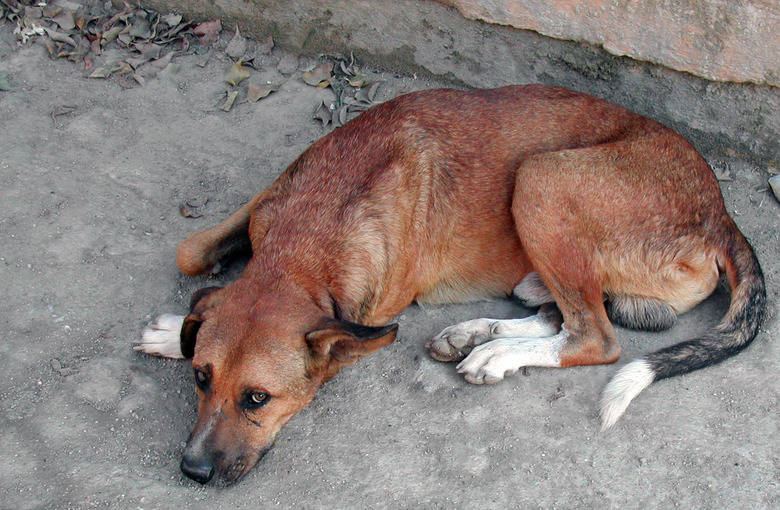Scar Treatment For Dogs
When you have more than one dog, rough and tumble play often leads to scratches and tooth marks serious enough to leave scars. Other injuries and surgeries may lead to scarring, which often shows up for years as hairless areas, jagged raised lines or even areas of white hair. In some instances, scars are painful or irritating to the dog, leading to further injury from biting or scratching the area. A trip to your vet can determine the best course of action to restore your dog's skin and coat to maximum heath and beauty.
Don't Hesitate
Don't Hesitate
When your dog is injured, the best way to prevent scarring is to make sure your dog's wound is properly treated. Your vet will determine whether a wound requires suturing and clean it thoroughly to remove debris, hair or other matter that may interfere with the healing process. Jagged and torn skin is snipped away to provide clean edges for suturing that will result in a much cleaner appearance to the wound and, as a result, a less noticeable scar.
Don't Just Do It
Don't Just Do It
If you're planning to use home remedies to minimize scarring, check with your veterinarian first. Some topical treatments may encourage bacteria, setting the stage for inflammation, slowing the healing process and contributing to larger scars. Discuss your concerns and potential courses of action with your veterinarian. He may prescribe prednisone or another corticosteroid to reduce inflammation and scarring or OK natural topical scarring treatments after the wound heals for a few weeks. He also may advise adding foods rich in methylsulfonylmethane such as eggs, meat, fruits and veggies to your dog's diet to promote healing.
Healing Old Scars
Healing Old Scars
In laboratory studies, vitamin E effectively reduces scar tissue in dogs when used as part of the healing process. Some people swear by its use on old scars as well, but results vary. Do not use vitamin E or any other remedy for scars on your dog's skin or in his diet without checking with your veterinarian. Although no toxic effects are noted in dogs, an excess of the vitamin causes diarrhea and excessive bleeding in humans. Keep in mind that a dog will lick topical treatments, ingesting any potentially toxic ingredients in the process.
Causes for Concern
Causes for Concern
Sometimes, scars may need further veterinary attention. Keloid fibromas are lumpy areas where collagen has collected in the skin during the healing process. These areas can feel irritating or even painful to your dog, and they can sometimes develop into malignant fibrosarcomas. Your veterinarian can remove the excess tissue of the keloid fibromas, greatly reducing your dog's discomfort and minimizing the unsightliness of the scar. Dogs with vitiligo may have skin and hair grow back white over the wound. The condition is harmless but if it bothers you, ask your vet about possible treatments to darken the area.
Always check with your veterinarian before changing your pet's diet, medication, or physical activity routines. This information is not a substitute for a vet's opinion.
References
- US National Library of Medicine: Human Amniotic Membrane and Vitamin E/Selenium for Control of Postoperative Adhesion in Dogs
- US National Library of Medicine: Vitamin E and Its Clinical Challenges in Cosmetic and Reconstructive Medicine With Focus on Scars; A Review
- Foster and Smith Inc.: Fat Soluble Vitamins: A, D, E & K in Dogs
- Merck Manual for Health Care Professionals: Vitamin E
- US National Library of Medicine: Keloidal Fibromas and Fibrosarcomas in the Dog
- Mary Straus/Whole Dog Journal: Noses and Toes Gone Wrong
- Merck Manual for Veterinary Professionals: Initial Wound Management
- Merck Manual for Veterinary Professionals: Corticosteroids
- Drugs.com: MSM Powder
